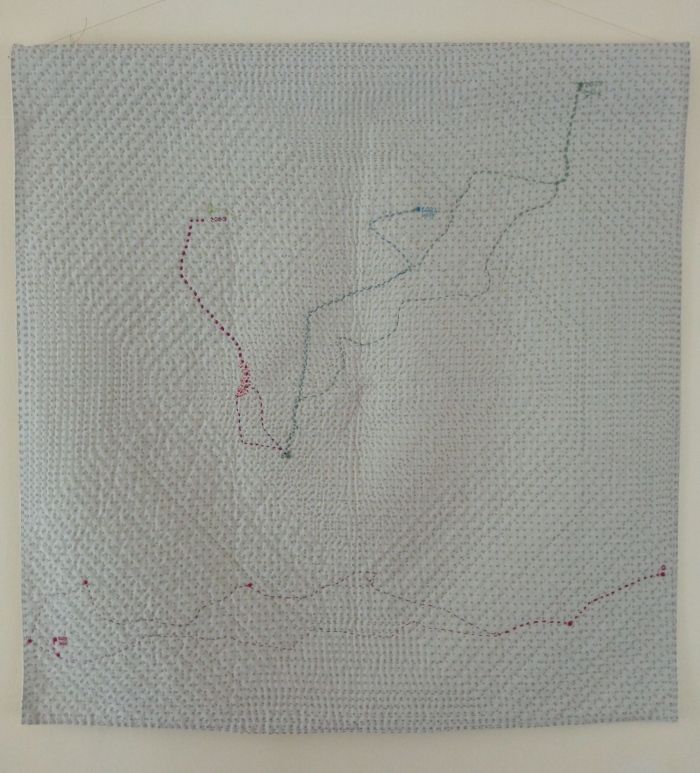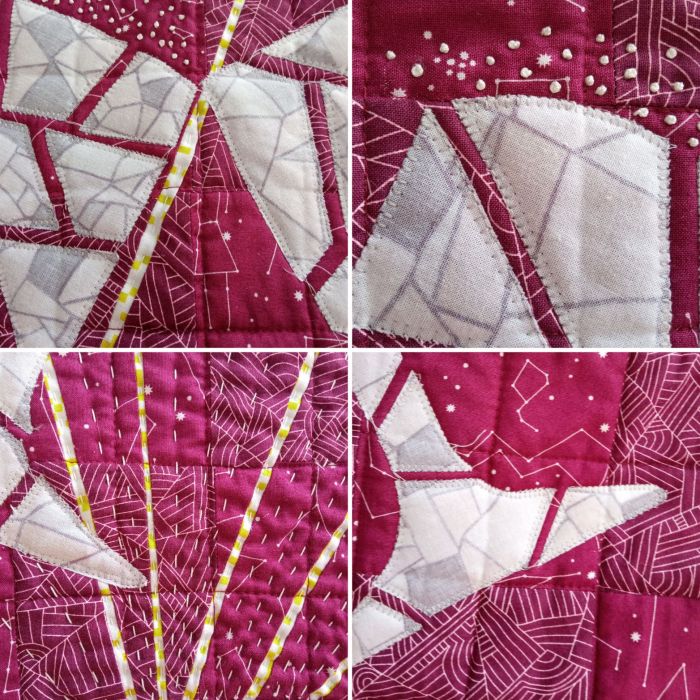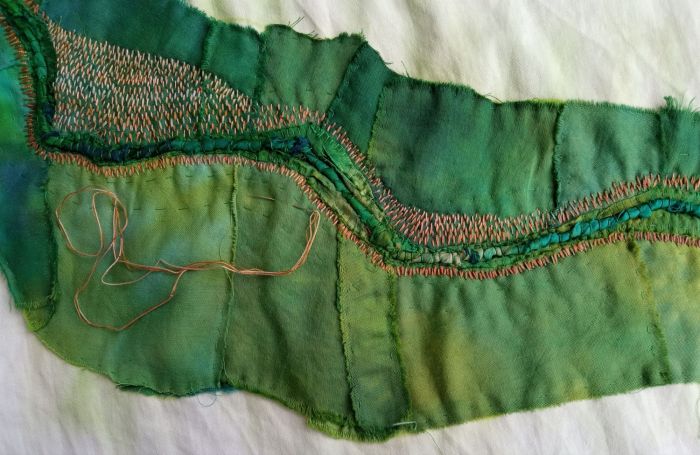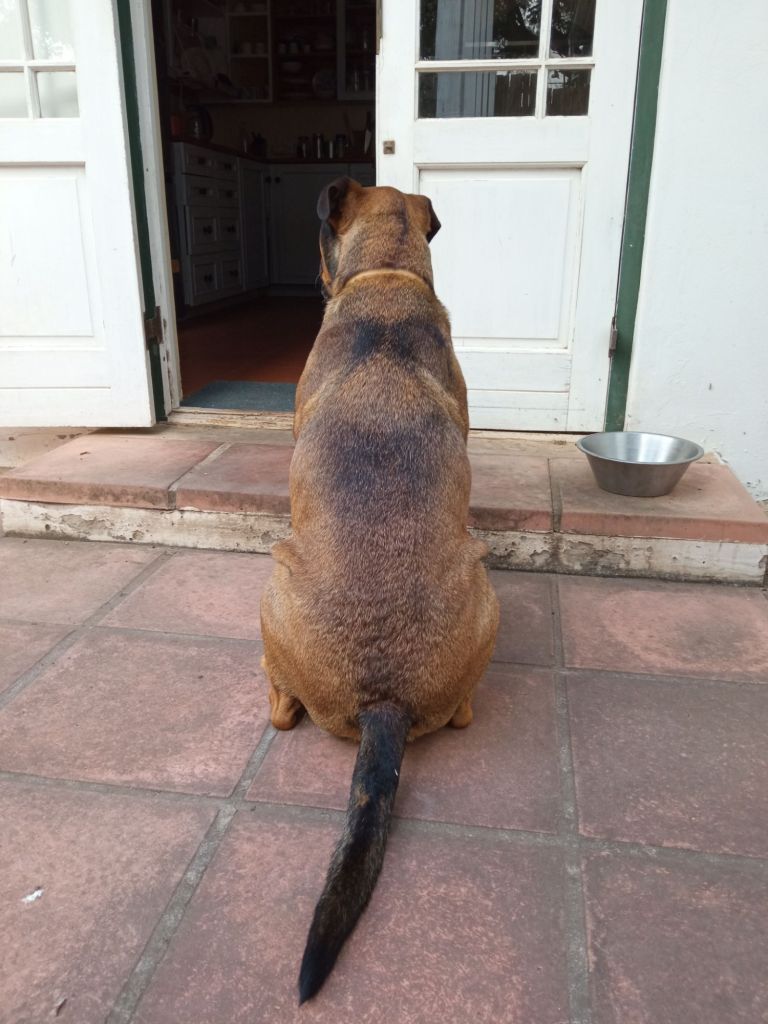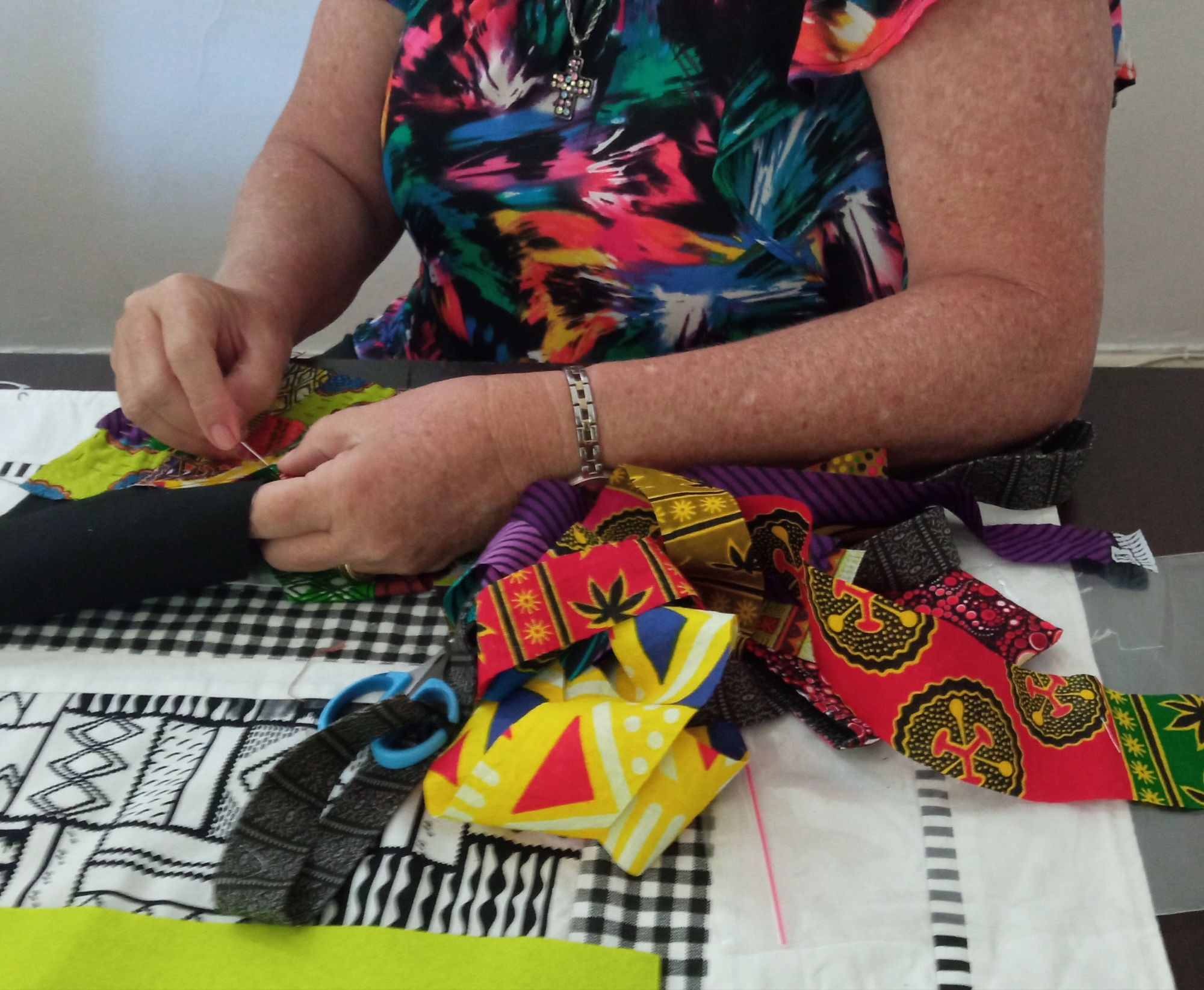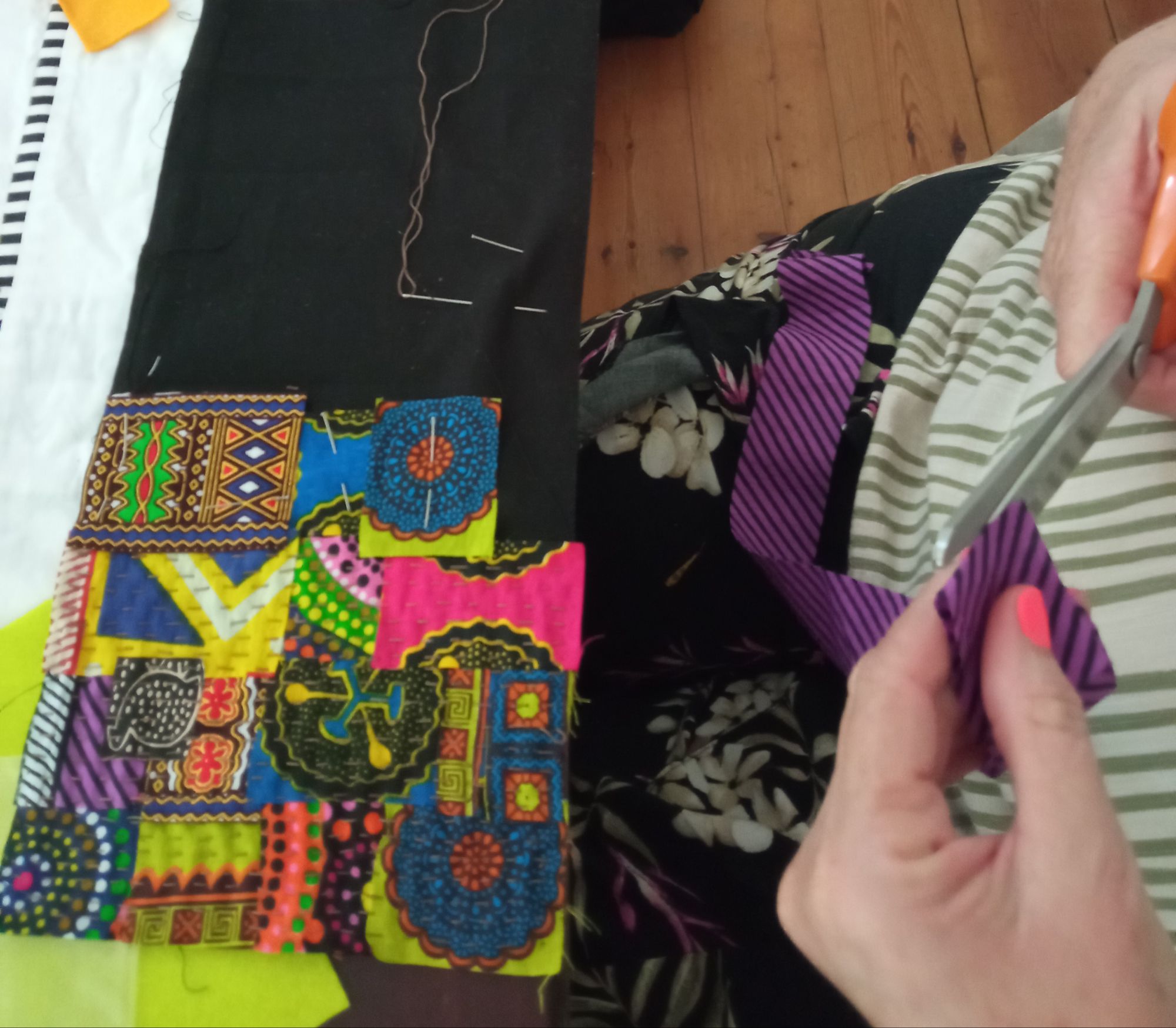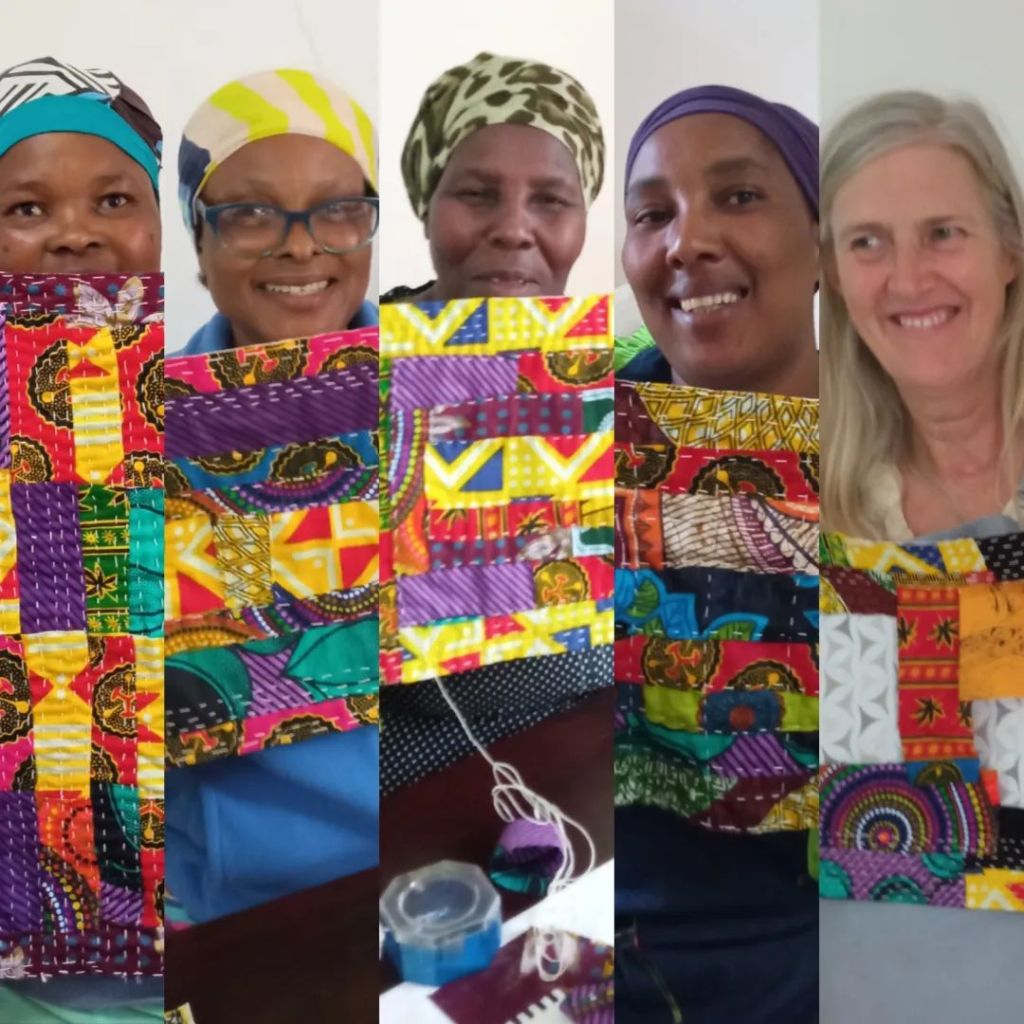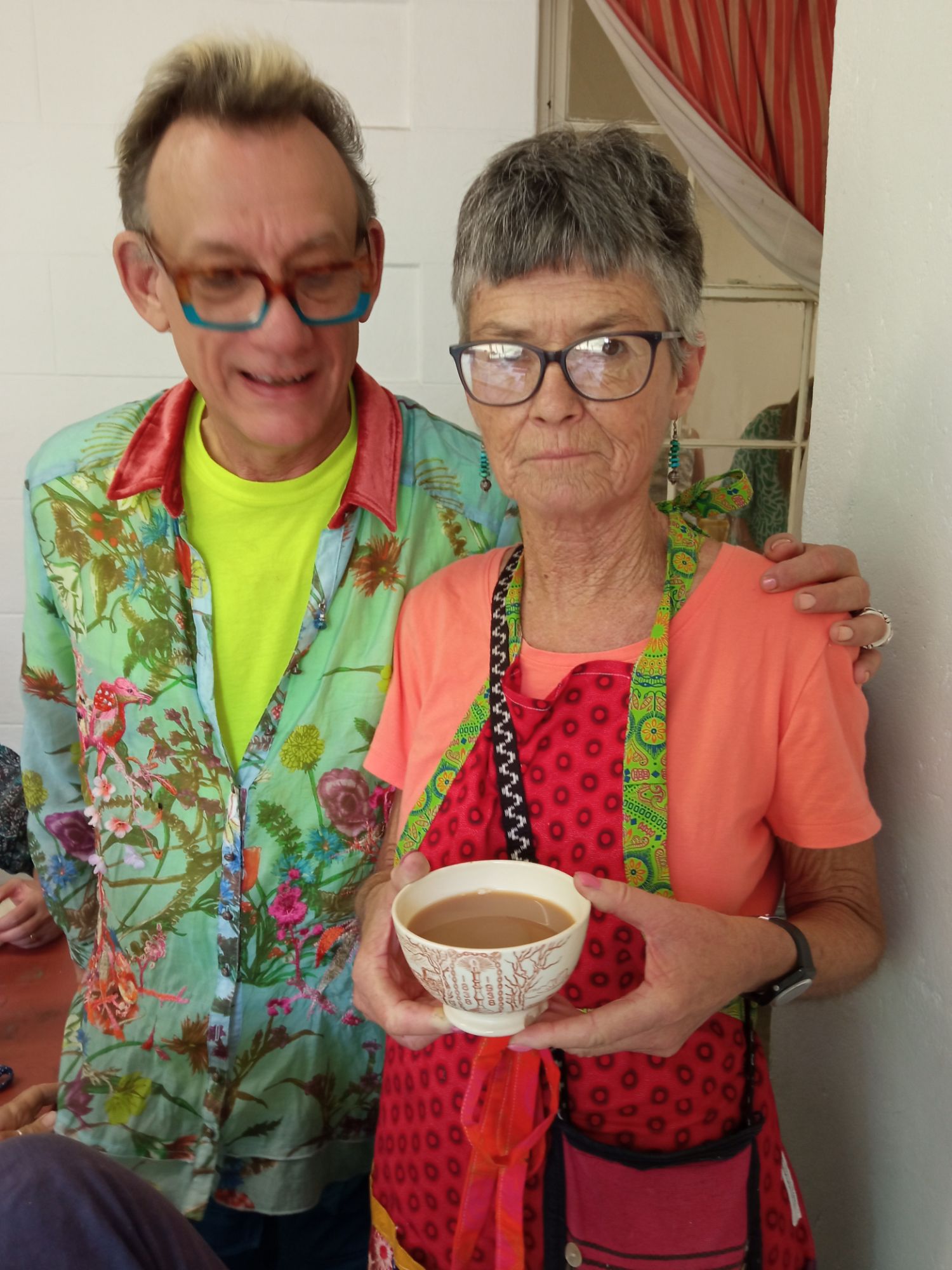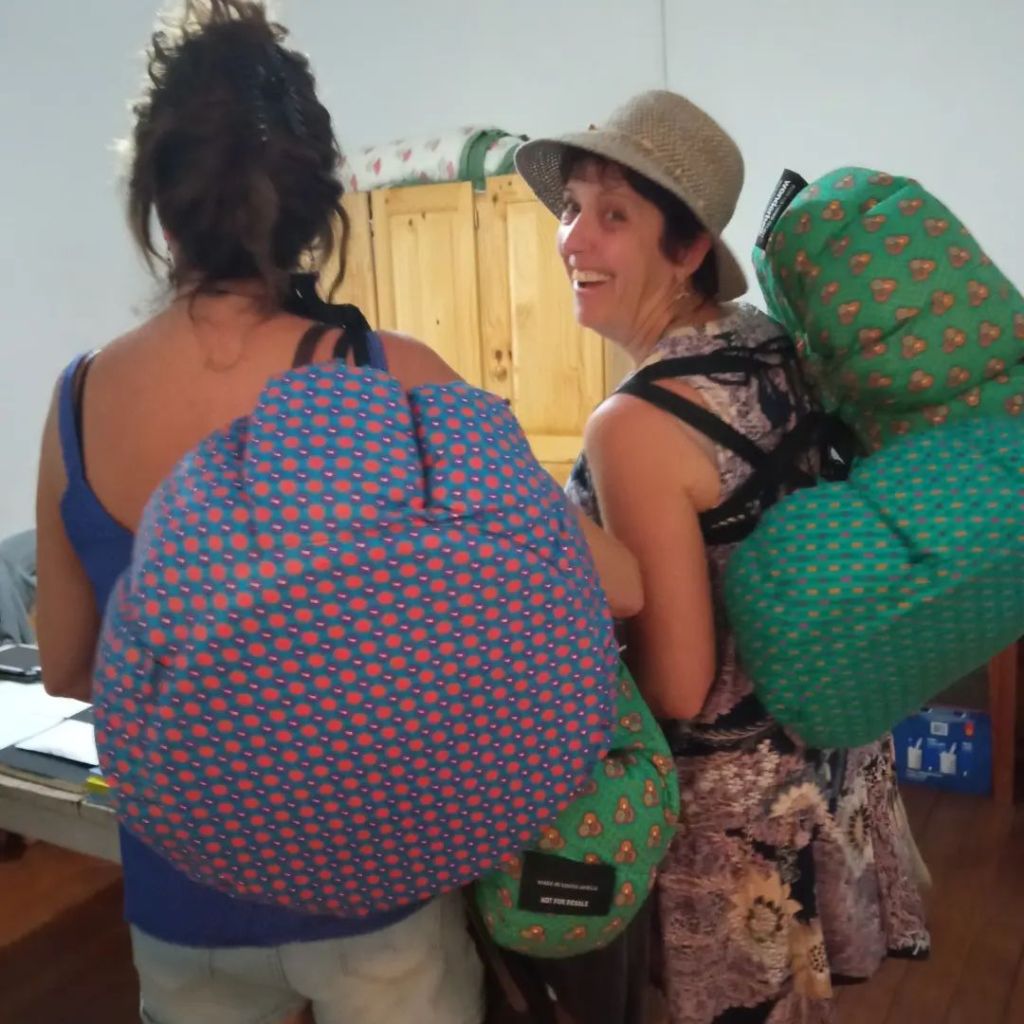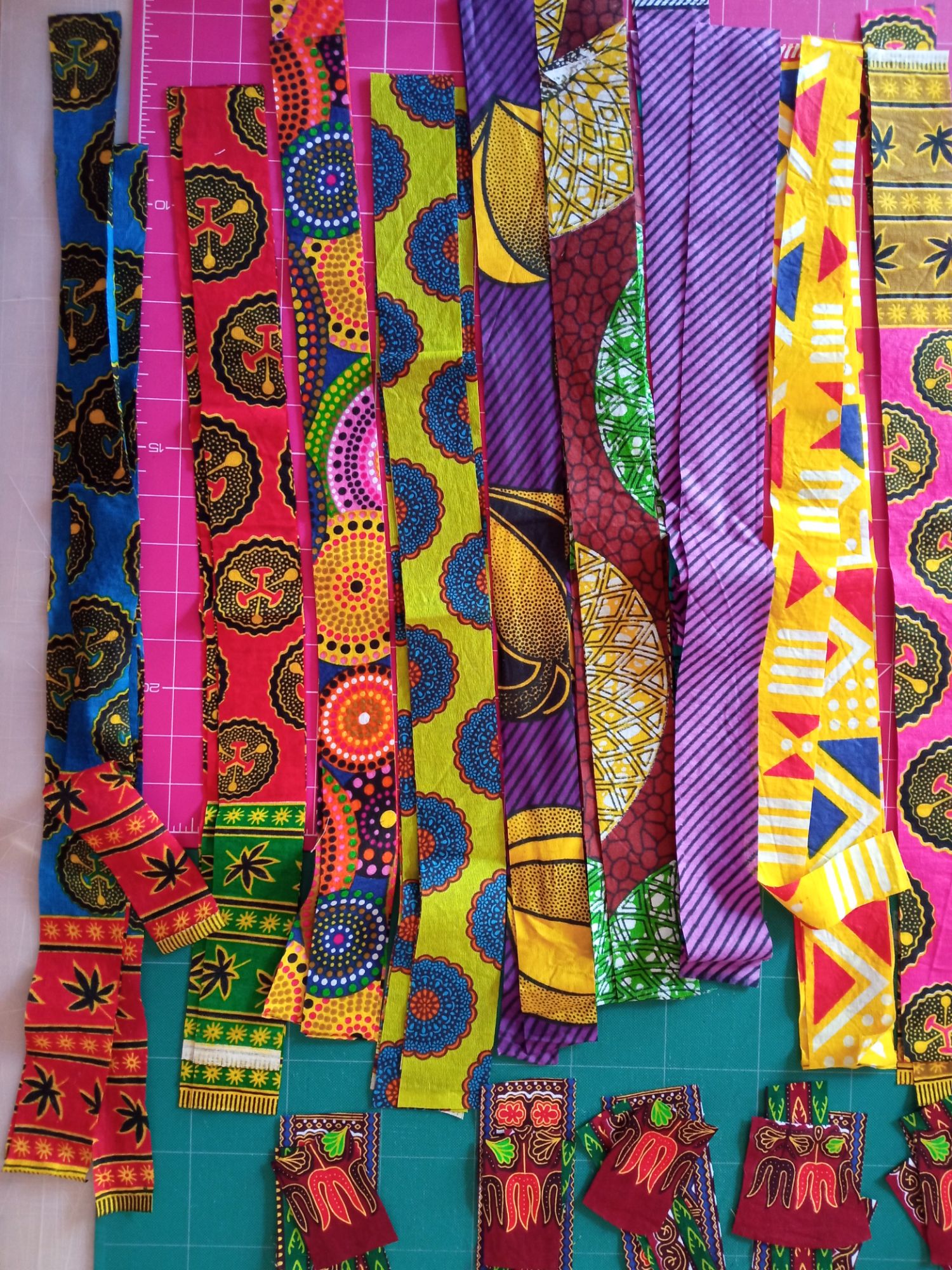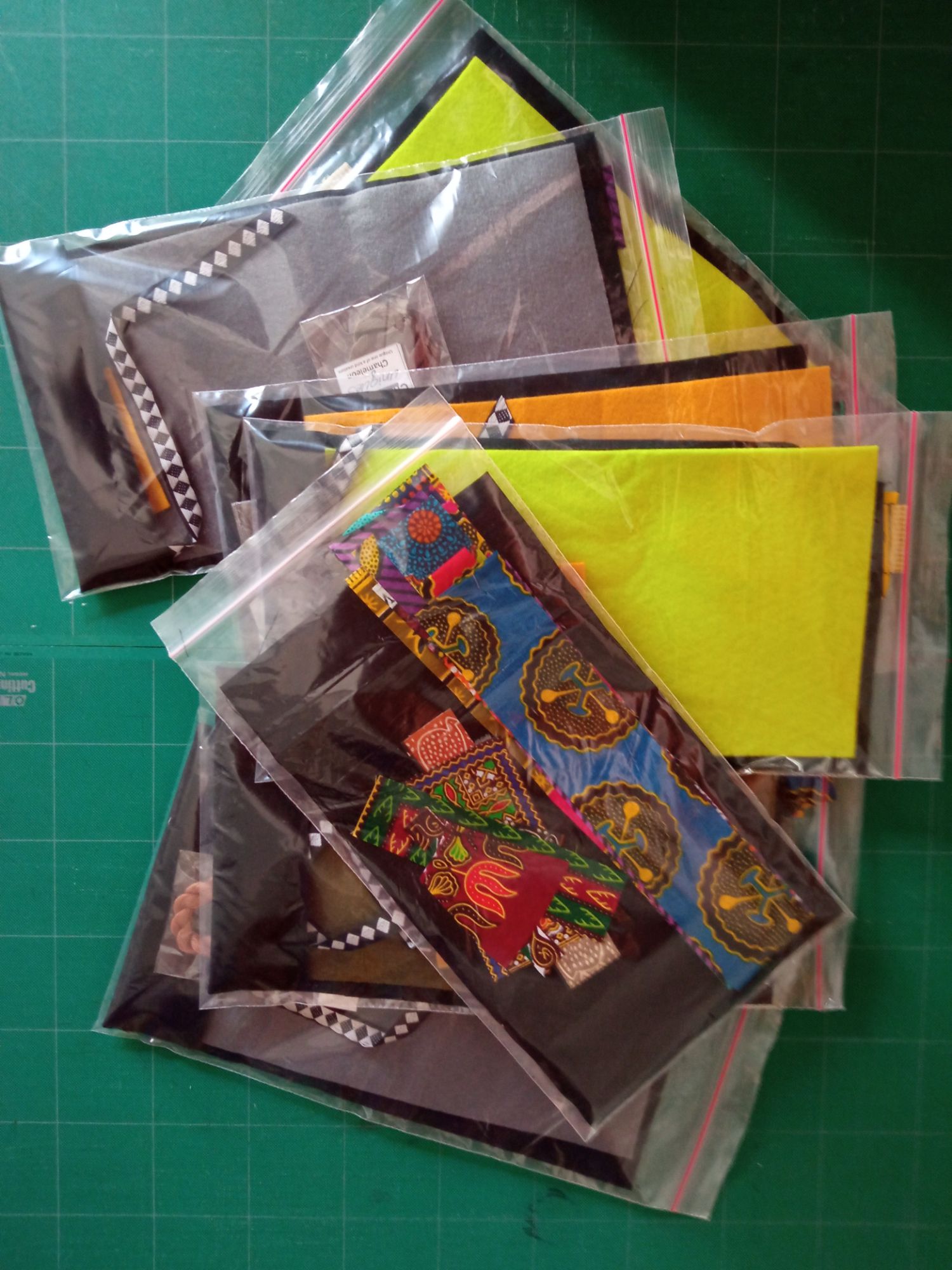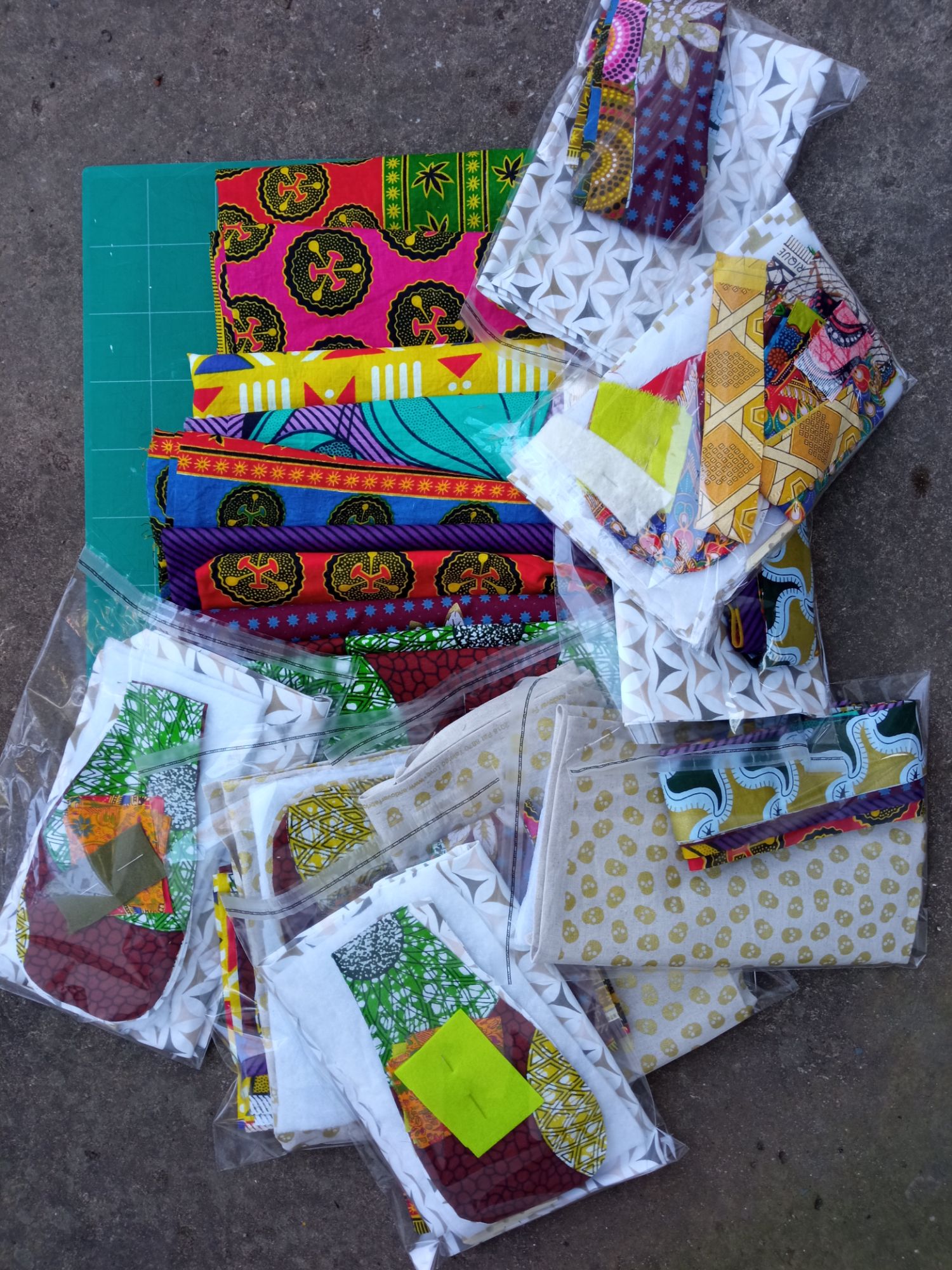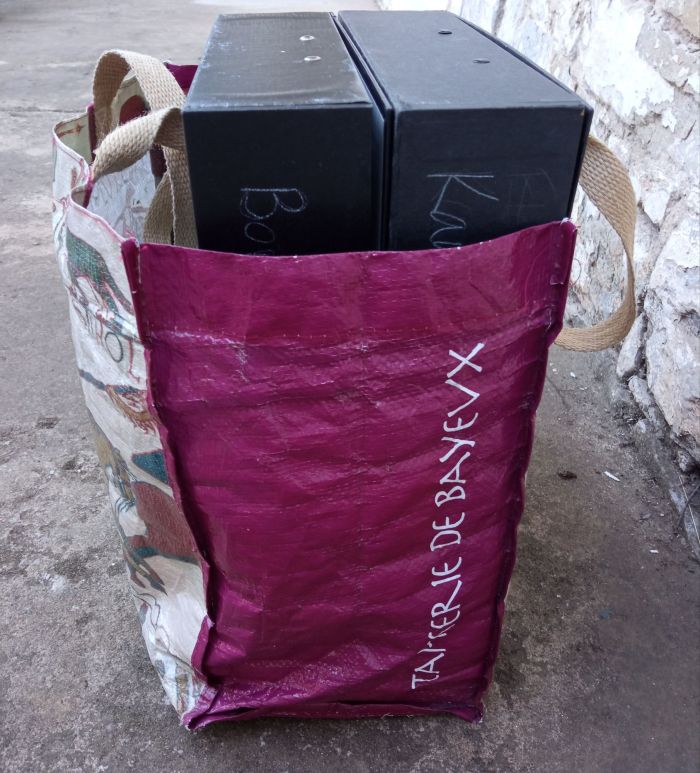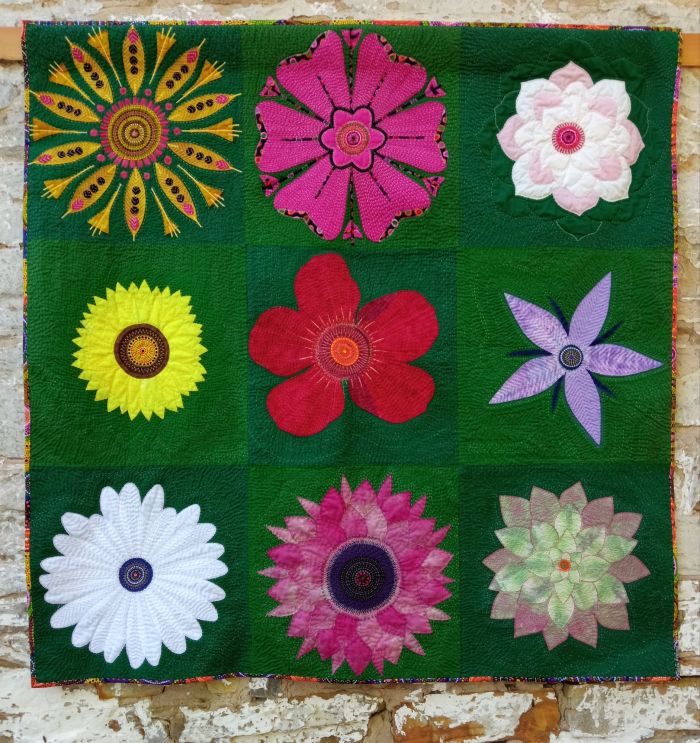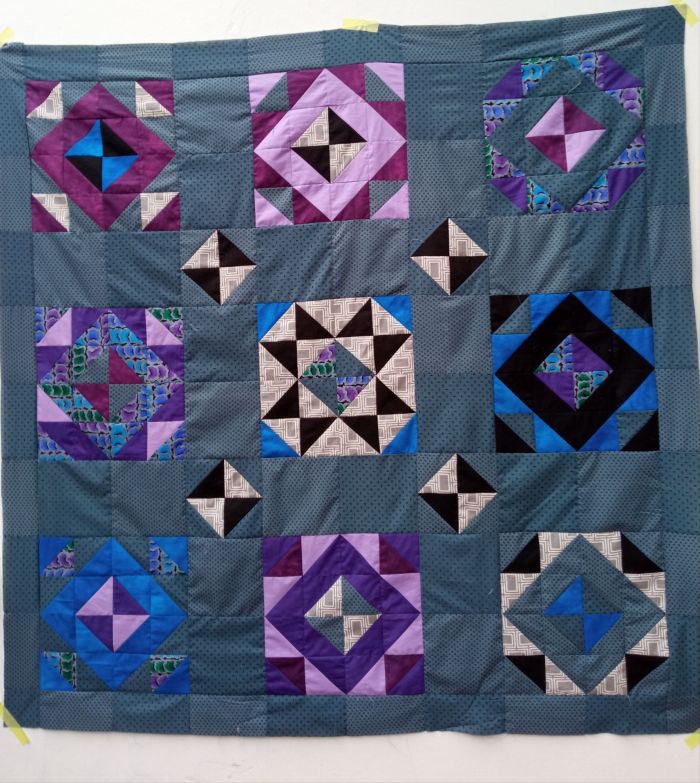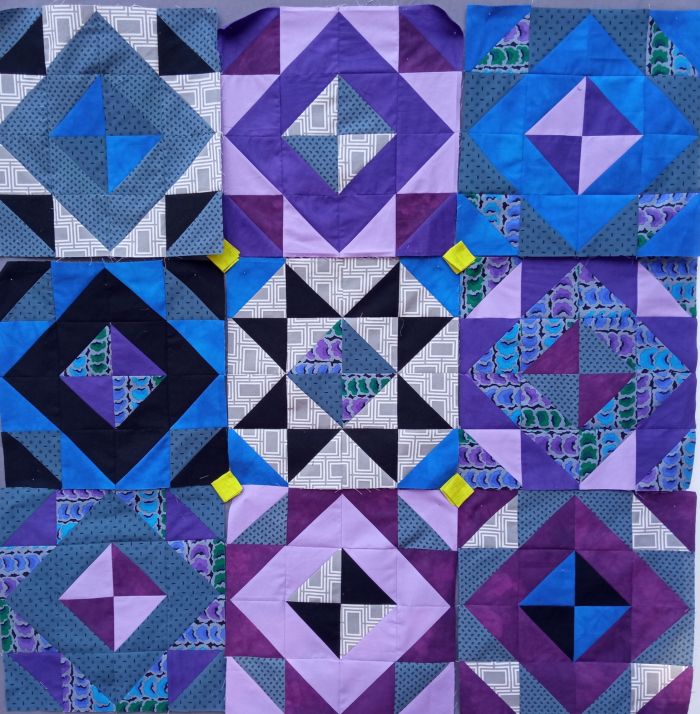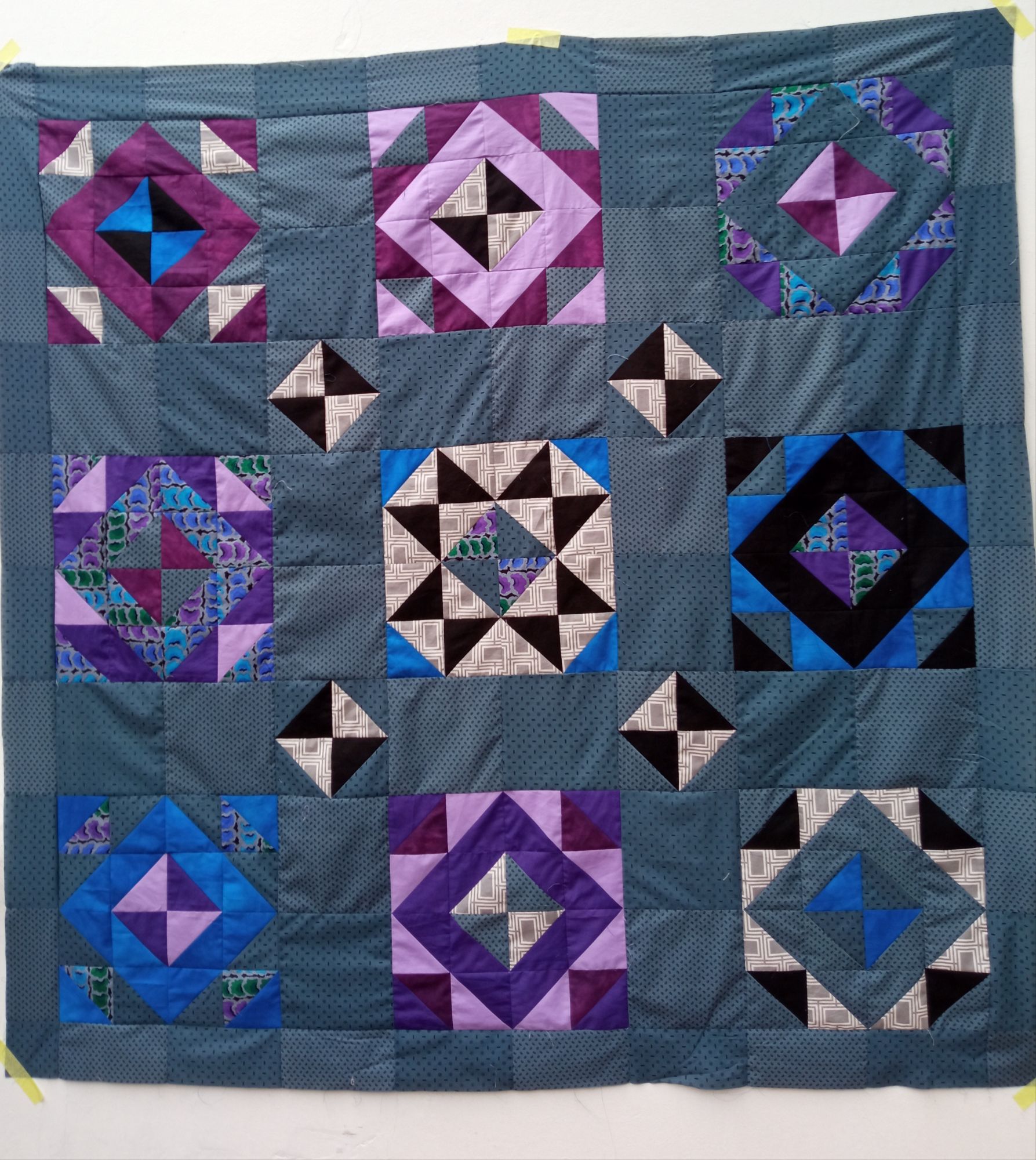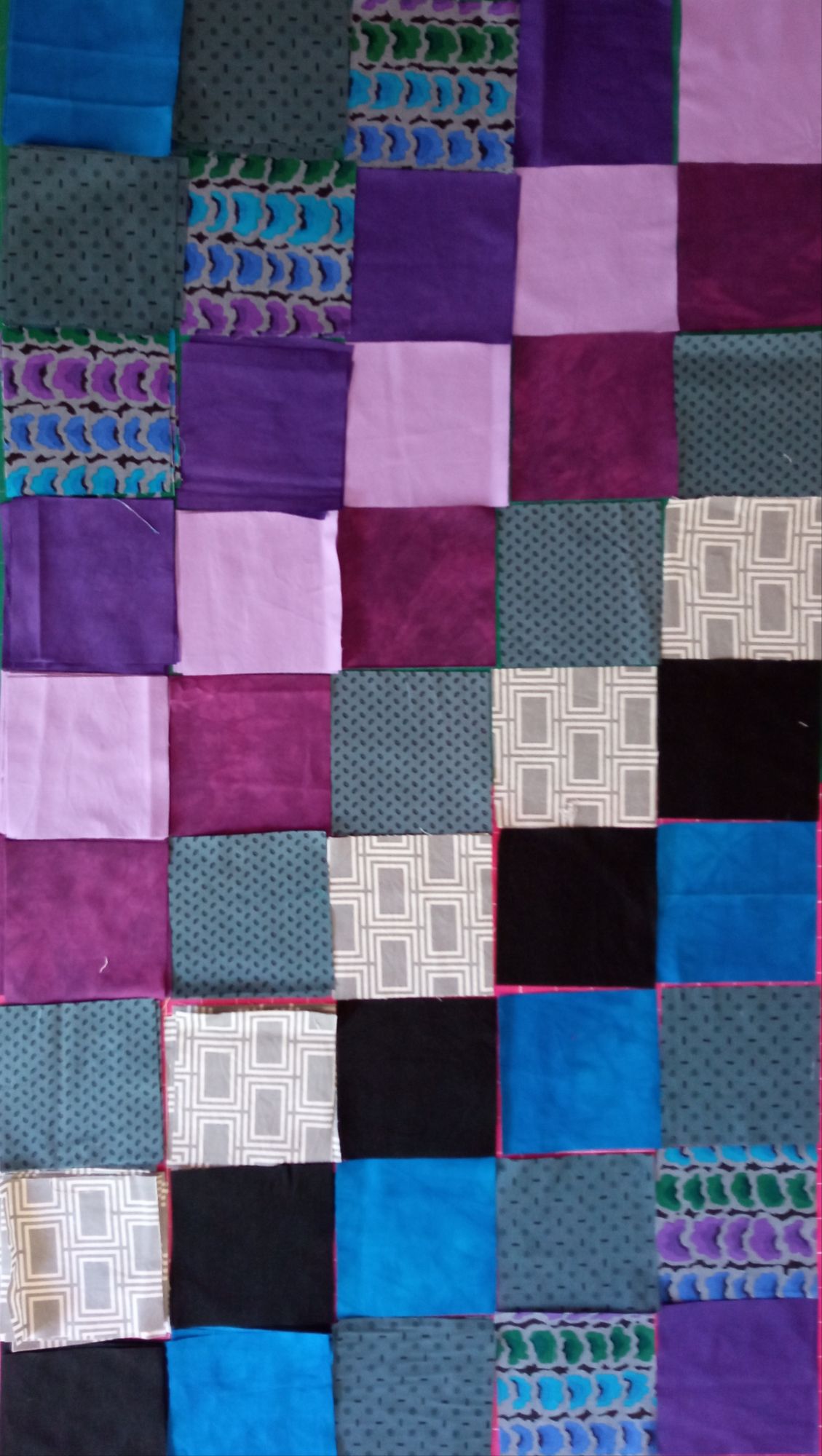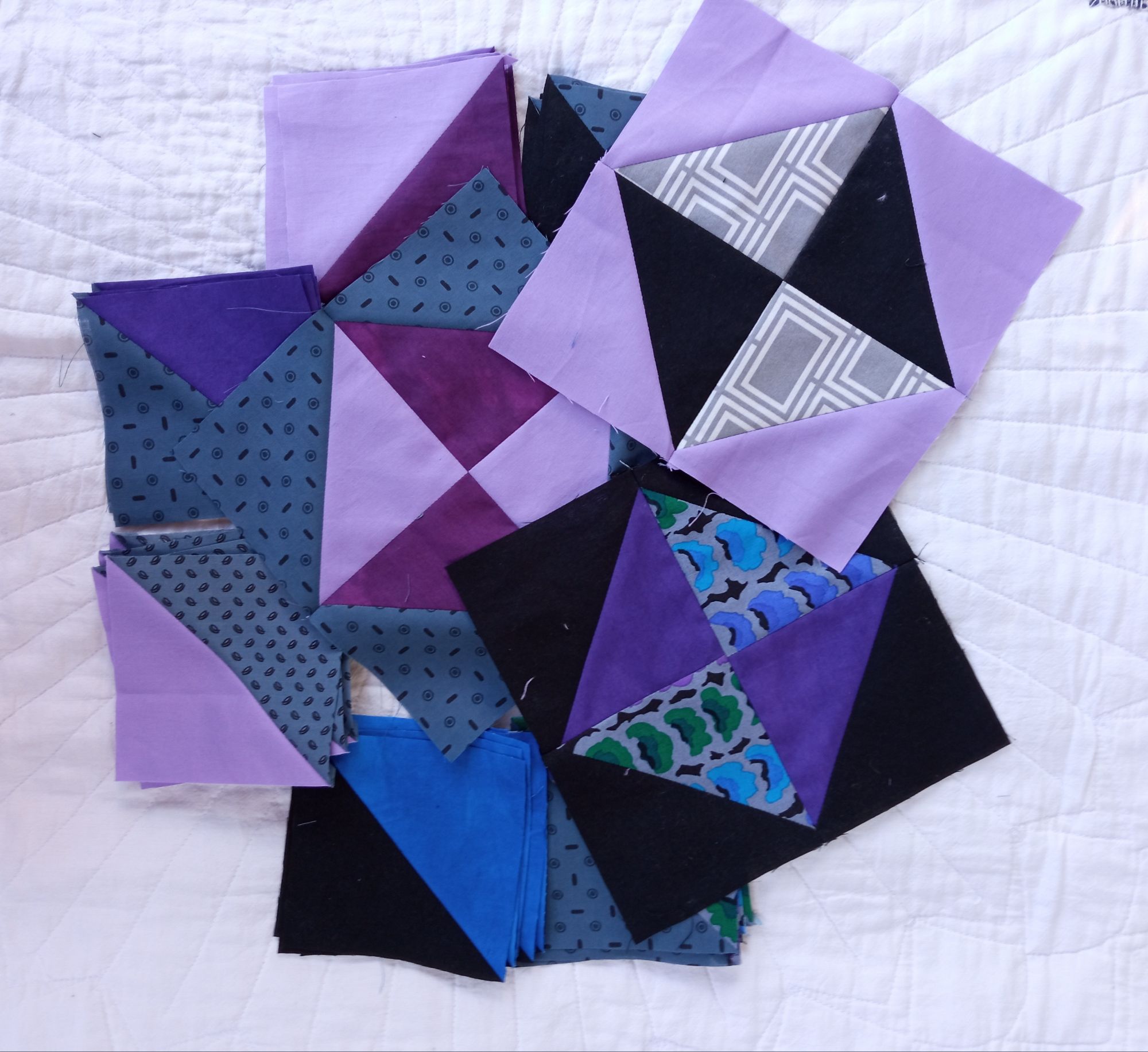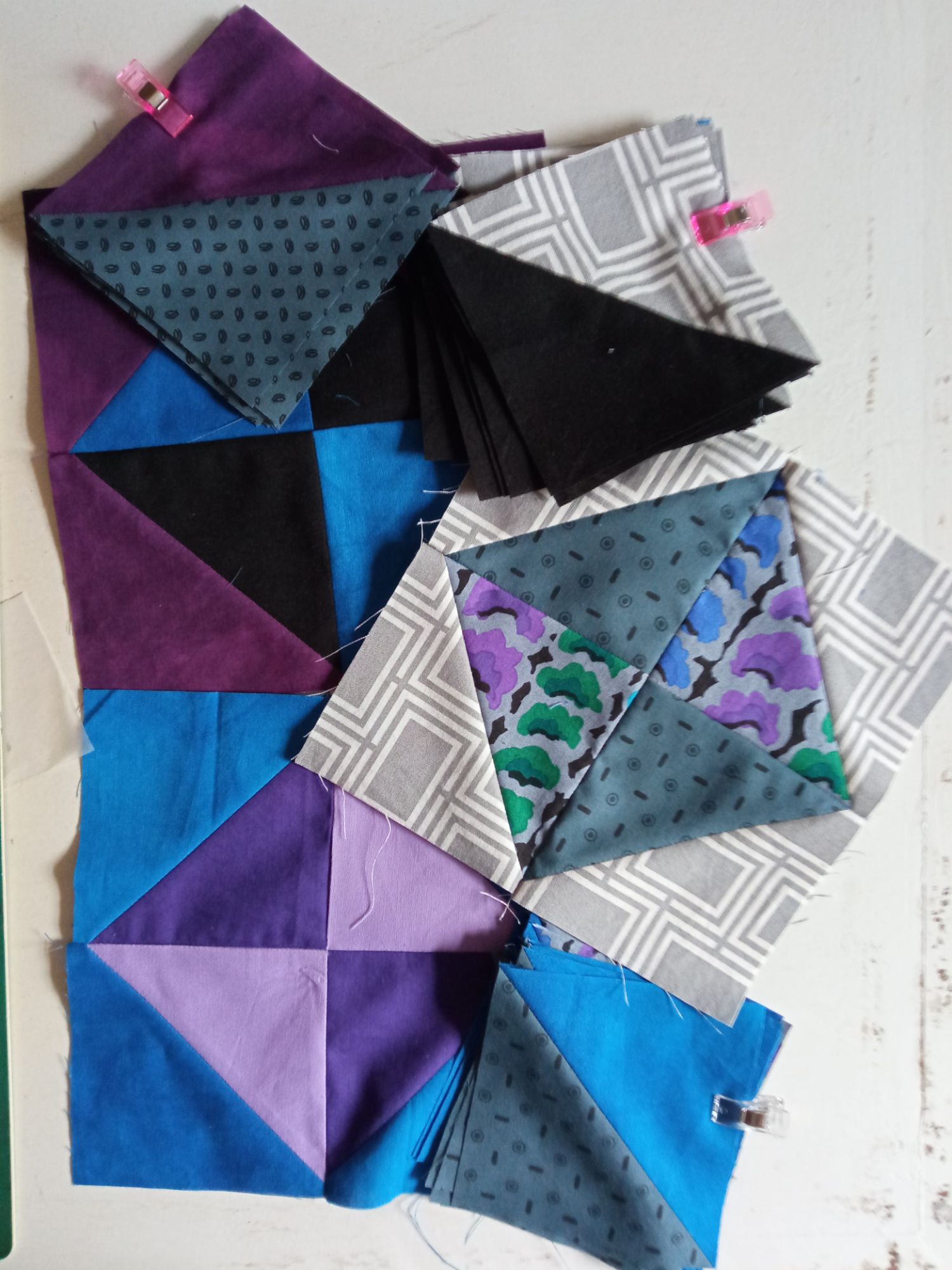What a week! It has included a trip to the city, a meeting with my textile support group, knitting with my oldest friend, and — most exciting — the collecting of my book from the printers.

What a moment! I sat at the boardroom table at the printers’ and opened the book that was waiting for me. The smell of the newly printed pages and the feel of the silky 300g cover in my hands was an entirely new experience. Since then there has been a sense of unreality, of not quite believing that we managed to produce this book. To explain the “we”, this is what the acknowledgements page says:
- To Andrew Stevens for the steady support
- To Catherine Knox for the mentorship
- To Dan Wylie for the idea, the editing and the encouragement
- To my quilting friends for the convivial friendship
- To Madeline Lategan Parker Lass for the nudge
It is self-published, with help from the friends mentioned above and JP, the graphic artist at CADAR printers. I did the layout (on paper) and he tweaked away the problems.
Here are two more sneak peaks from inside the book.


The contents includes a foreword by Dan Wylie, notes about quilting and textile art, a gallery of 22 works in full colour plates and accompanying technical notes, details of annual self-challenges, more notes on my teaching practice, and an essay on running stitch. It also includes a poem or two.
My oldest friend (we are the same age and have been friends for over 50 years) was the first to see the book. She took the photograph that is reproduced in stitch and re-reproduced as the book’s front cover image. We celebrated by popping the cork on a bottle of South African sparkling wine.
The book is printed on heavy weight paper, measures 23 x 21 cm, contains lots of colour and interesting text, and is 72 pages. It costs R390 (R500, if couriered to your door in South Africa).




